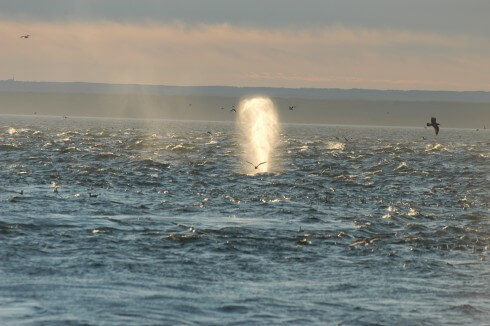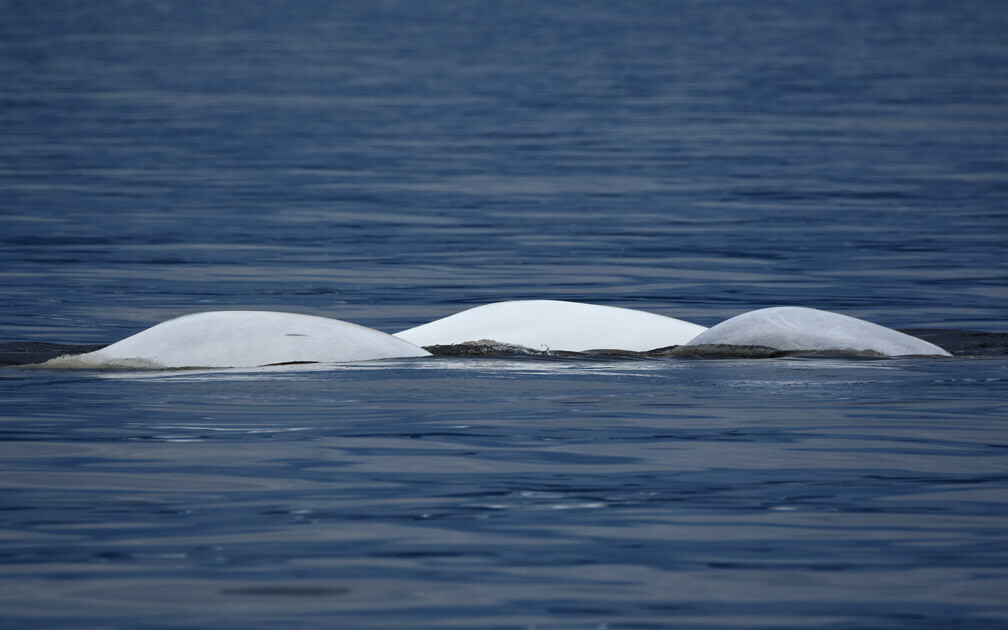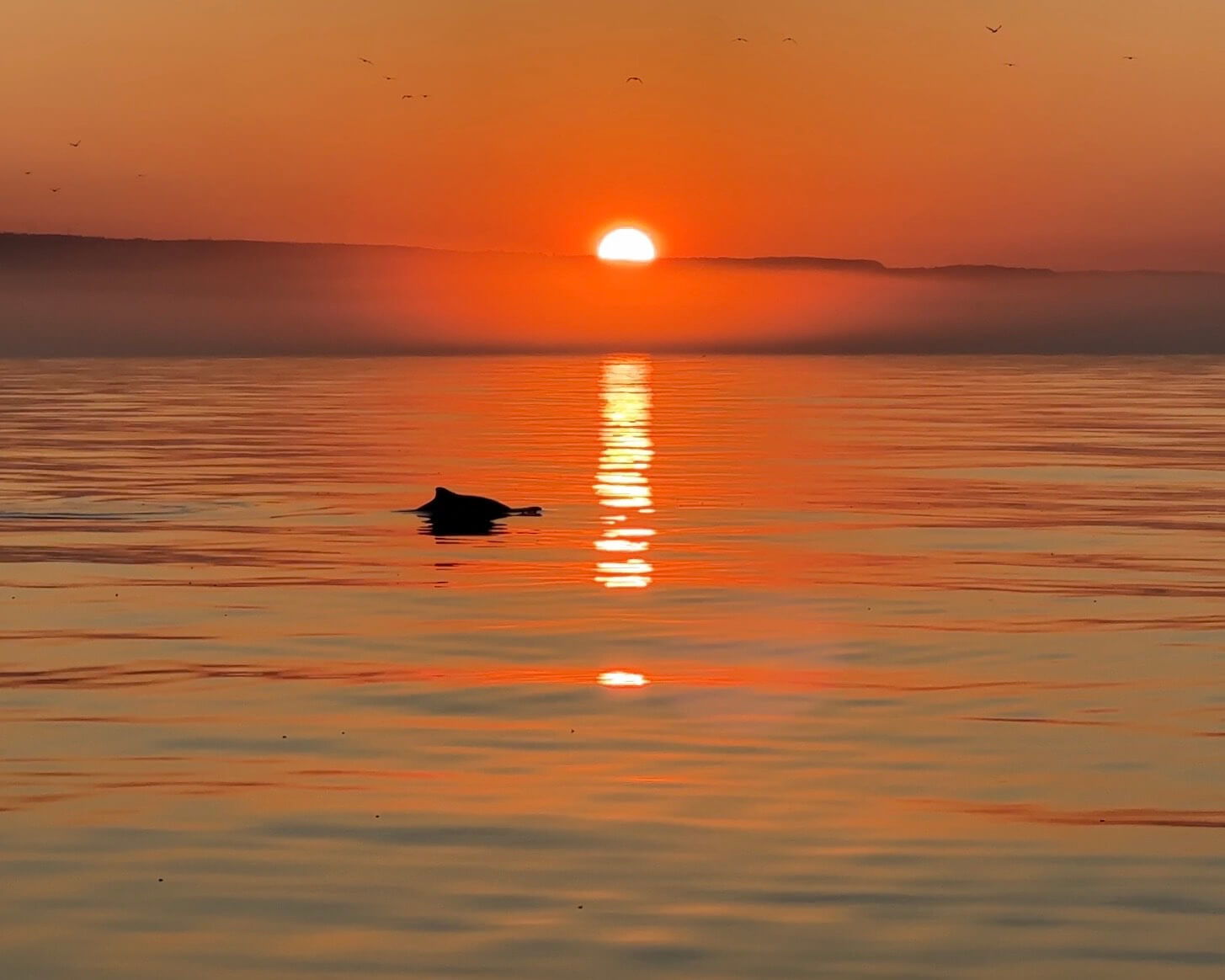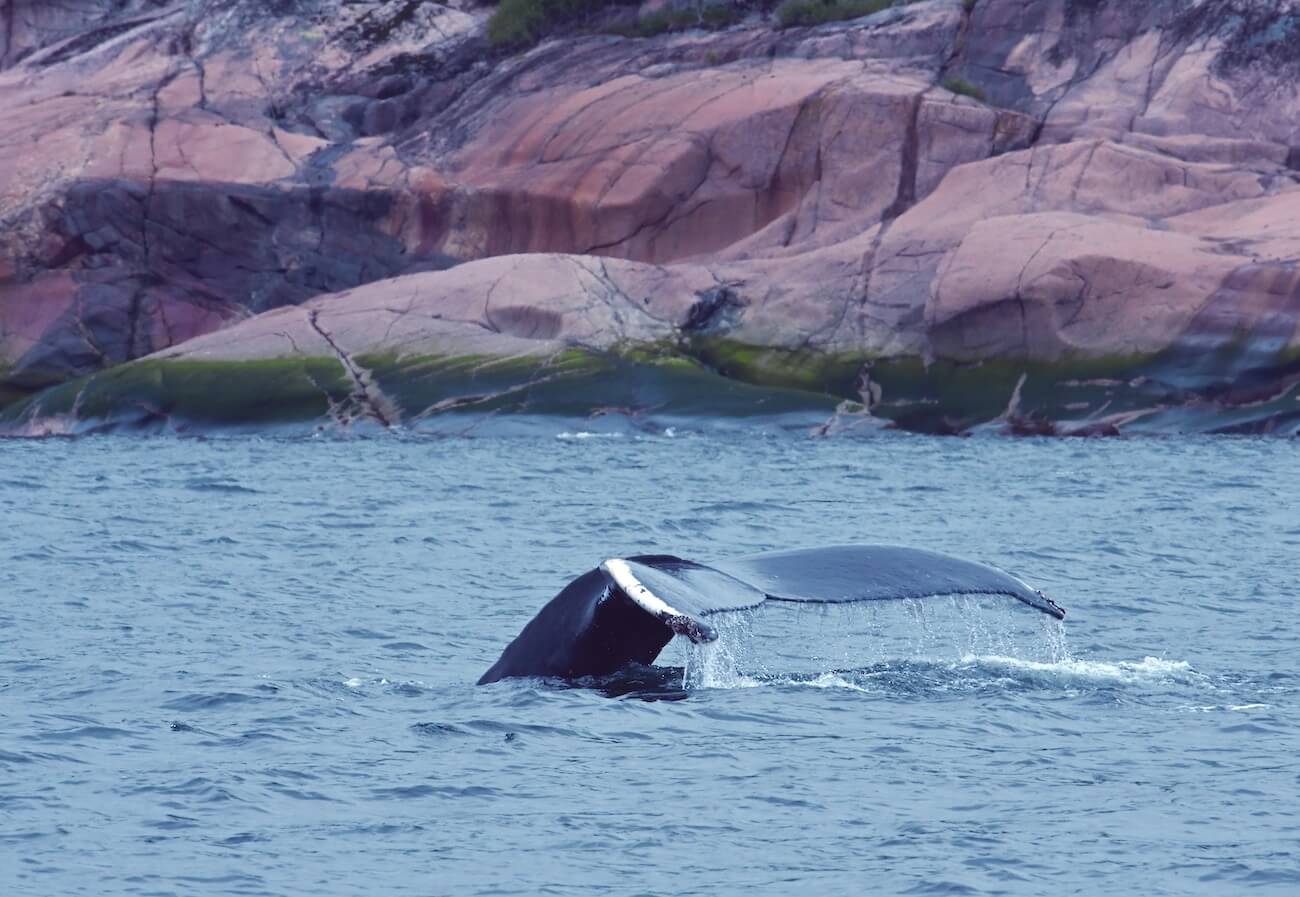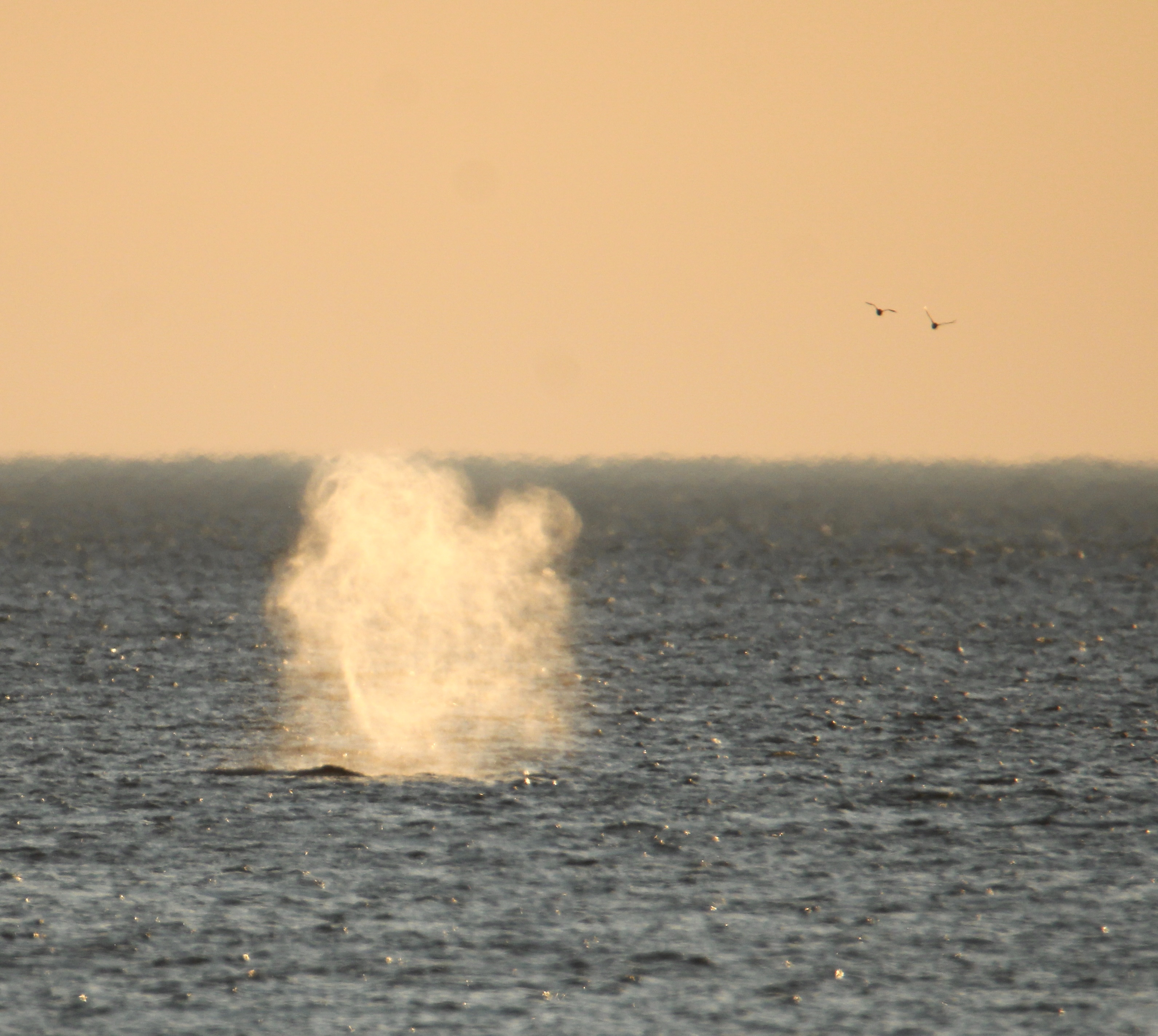It’s a white January morning and the wintry wind is blowing across the river when a local resident sitting cosily in her house notices a spout in the distance. A few minutes pass and the blasts erupt one after another… large rorquals are still present in the gulf! In addition to these behemoths, let’s not forget the seals and belugas that have been observed in several parts of the St. Lawrence in the past week.
Frosty breaths
“We were lucky enough to observe a large spout in Gaspé Bay,” shares one resident. “We saw it from our window in Cap-aux-Os. After about ten consecutive breaths, we saw its back […]. Quite surprising for the 21st of January! There was a stiff breeze, so the mist quickly dissipated.” A few days later, a large spout of a humpback was observed through a window of the same home. And that wasn’t the only large rorqual sighting of the week! Another observer reports the presence of a group of five humpbacks in Gaspé Bay and possibly a fin or blue whale… to be confirmed.
In Cap-des-Rosiers, seals have been spotted lazing on a few masses of ice. “Between Cap-Chat, Sainte-Anne-des-Monts and Tourelle, hundreds upon hundreds of seals were present,” reports one surprised resident. “During low tide and during the afternoon high tide, they were on the pack ice.” While out for a stroll on Haldimand beach, one woman comes across a harbour seal. From the beach in Penouille, her gaze is drawn to the elements of the icy landscape, that is when she’s not looking at the handful of distant seals present offshore.
On the other side of the gulf as well, blasts also dotted the horizon. In Sept-Îles, a few humpbacks seemed to be present. A hiker and marine mammal enthusiast happened upon a pinniped in Gallix: “A head poked out and it looked like a harbour seal. It popped its head up a few more times as it drifted farther out to sea.” In Franquelin, observers were able to appreciate the presence of about fifteen harp seals, while near Longue-Rive, members of this species were observed resting on the ice floes.
Whitecaps, white ice, or white whales?
In choppy seas, the white wave crests that form can easily be mistaken for the white backs of belugas. This phenomenon is affectionately nicknamed “béluvagues” (Translator’s note: “vagues” is French for “waves”) by local naturalists and certain waves can sometimes befuddle even the most seasoned observer. One must pay close attention when scanning the sea to ensure that the beluga is indeed a beluga. In winter, the exercise becomes all the more complex since the myriad small chunks of ice floating on the water surface can also be mistaken for the backs of belugas. One must therefore be patient and keep one’s eyes glued to the sea to be absolutely sure of the identification!
In the past week, the presence of belugas has been confirmed in Les Escoumins, Cap de Bon-Désir, Les Bergeronnes and at the mouth of the Saguenay River. A group of three belugas was observed from the Saint-Siméon marina.
Share your observations!
Have you seen any marine mammals in the St. Lawrence? Whether it’s a spout offshore or just a couple of seals, drop us a line and send your photos to [email protected]!



